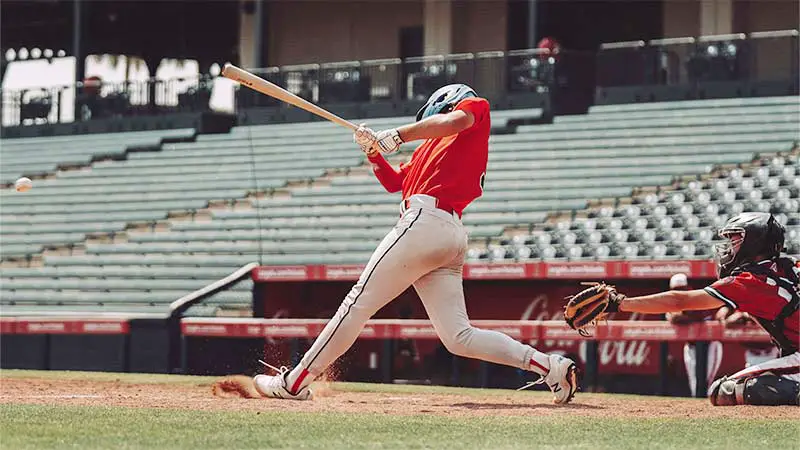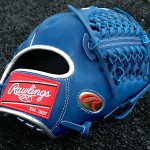In the high-stakes world of baseball, few terms spark as much debate as “clutch hitter.” Fans and analysts alike have long argued about the true impact of players who seem to thrive under pressure.
According to the Dickson Baseball Dictionary, a clutch hitter is someone who consistently delivers in critical game moments, a trait revered by many but questioned by some.
Recent studies suggest that clutch hitting may have a smaller impact than traditionally believed, approximately half the effect of typical left/right platoon advantages.
Interestingly, the increased specialization of relievers over the years might have reduced clutch hitting performance. Yet, experienced hitters often show better clutch results, adding another layer to this fascinating baseball phenomenon.
The Essence of Clutch Hitting in Baseball
Understanding the clutch hitter is delving into the realm of baseball where legends are made, and debates rage endlessly. Let’s break down what it means to be a clutch hitter.
Defining Clutch Hitting in Baseball
Clutch hitting involves players performing exceptionally well in high-pressure situations. These moments often occur in critical game phases, such as the ninth inning or with runners in scoring position.`
A clutch hitter is expected to deliver game-changing hits, thereby increasing their team’s chances of winning. Positions where clutch hitting is scrutinized include late-inning scenarios and high-leverage situations, which highlight a player’s ability to perform under stress.
Myth vs. Reality: The Clutch Gene Debate
The concept of a “clutch gene” suggests some players have an innate ability to perform exceptionally well under high pressure consistently.
However, research, including studies by sabermetricians like Dick Cramer, disputes this idea, showing minimal consistency in clutch performances from season to season, indicating it may be due more to chance than skill.
Data analysis reveals little correlation between a player’s clutch performances across different seasons, suggesting that perceived clutch ability might be more about episodic excellence rather than a repeatable skill.
Key Statistics for Evaluating Clutch Hitters
When it comes to evaluating clutch hitters, certain key statistics provide valuable insights into their performance under pressure. Let’s explore these metrics:
Batting Average with Runners in Scoring Position
Batting Average with Runners in Scoring Position (BARISP) is a key metric for evaluating clutch hitters, measuring their batting average when at least one runner is on second or third base.
This statistic reveals a player’s ability to perform under pressure and contribute to the team’s success in critical moments.
For example, Hyun-Jin Ryu maintained a high BARISP, showcasing his clutch competence as a pitcher by delivering hits that drive in runs in tight games.
Win Probability Added (WPA)
Win Probability Added (WPA) evaluates a player’s impact on a game by measuring how their actions influence the team’s winning chances. It offers a detailed view of performance in high-pressure situations by considering the context of each play.
For example, a player like Bobby Abreu might rank higher in clutch performance than a famous slugger like Albert Pujols in a season, highlighting his ability to excel in specific moments.
WPA and BARISP both offer insights into a player’s clutch performance beyond traditional statistics.
Profiles of Historical Clutch Hitters
Exploring the profiles of historical clutch hitters offers a glimpse into the legends who have left an indelible mark on baseball lore. Here are some notable examples:
Memorable Clutch Performances
Throughout baseball history, clutch performances have created unforgettable moments. Mickey Mantle hit 18 World Series home runs, showcasing his October heroics.
David Ortiz, “Big Papi,” excelled in the 2004 ALCS, helping the Red Sox overcome a 3-0 deficit against the Yankees with crucial hits. Kirk Gibson’s 1988 World Series walk-off home run remains one of the most iconic clutch moments.
Carl Yastrzemski had an extraordinary September in 1967, leading the Red Sox to a historic pennant win. Derek Jeter earned his “Mr. November” moniker with a game-winning home run in the 2001 World Series, solidifying his clutch performer reputation.
Key Attributes of Successful Clutch Hitters
Successful clutch hitters share distinct attributes, including composure under pressure, consistency, situational awareness, and mental toughness.
David Ortiz and Derek Jeter exemplified composure in critical moments, while Lou Gehrig’s .361 career batting average with runners in scoring position showcases reliability.
Tony Gwynn’s ability to adapt his approach based on game context highlights situational awareness. Mental toughness, essential for recovering from failures and thriving in high-leverage situations, underscores the impact of players like Ortiz and Mantle.
Psychological Aspects of Clutch Hitting
Understanding the psychological aspects of clutch hitting unveils the mental fortitude that separates the greats from the rest. Let’s delve into these crucial aspects:
Mental Preparedness and Focus
Mental preparedness and focus are crucial traits of clutch hitters. Players like David Ortiz and Derek Jeter have demonstrated remarkable mental stability in critical moments. This mental fortitude allows them to block out distractions and focus solely on the task at hand.
Studies show that high-level athletes often use visualization techniques, such as imagining themselves successfully hitting the ball, to enhance performance.
Consistently implementing these strategies can help players improve their focus, making them more effective in clutch situations.
Handling Pressure Situations
Handling pressure situations distinguishes clutch hitters from their peers. Carl Yastrzemski, despite being a top hitter, struggled with untimely hits in 1969 and 1970. In contrast, Tony Perez earned a reputation for delivering at crucial times, aiding his candidacy for the Hall of Fame.
Effective clutch hitters maintain composure under high stress, leveraging their situational awareness to make better decisions. This ability to perform under pressure is often seen as an intangible quality that separates legendary players from good ones.
Frequently Asked Questions
Is there a “clutch gene” in baseball?
The existence of a “clutch gene” is debatable. Some argue that clutch performances are more about mental toughness and situational awareness, while others believe they are largely influenced by chance.
What metrics are used to evaluate clutch hitters?
Metrics like Batting Average with Runners in Scoring Position (BARISP) and Win Probability Added (WPA) are commonly used to evaluate clutch hitters and their performance in crucial moments.
Who are some notable clutch hitters in baseball history?
Notable clutch hitters include Mickey Mantle, David Ortiz, Derek Jeter, and Kirk Gibson. These players are famous for delivering memorable performances in high-stakes situations.
What attributes do successful clutch hitters have?
Successful clutch hitters often demonstrate qualities such as composure, consistency, situational awareness, and mental toughness. These attributes enable them to perform under pressure.
How does mental preparedness affect clutch hitting?
Mental preparedness plays a crucial role in clutch hitting. Players with strong focus, the ability to handle pressure, and psychological resilience are often more successful in high-stakes situations.
Conclusion
Understanding clutch hitting in baseball requires more than just looking at stats. It’s about recognizing the mental and psychological strength that separates legendary players from the rest.
Metrics like BARISP and WPA help, but they can’t fully capture the essence of a clutch hitter’s ability to perform under pressure.
Whether it’s the memorable moments of Kirk Gibson or the consistent excellence of Derek Jeter and David Ortiz, clutch hitters leave an indelible mark on the game.
Their composure, situational awareness, and mental toughness are qualities that make them stand out.
So, next time you watch a game, pay close attention to those high-pressure moments. You might just witness a clutch performance that adds another chapter to baseball’s rich history.








Pat Bloom